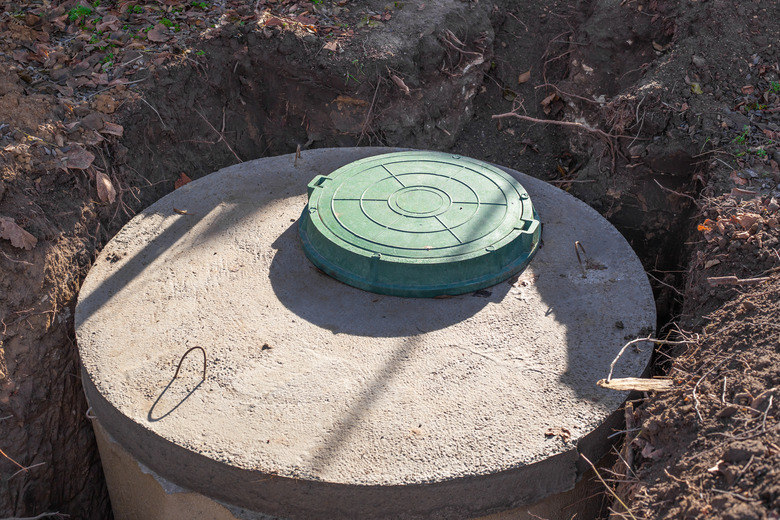How To Check A Septic Tank And Leach Field
We may receive a commission on purchases made from links.
A septic system is required in any dwelling that doesn't have access to a community sewer system, and the homeowner is responsible for maintaining it. Although most septic repairs are hazardous and should be left to professionals, homeowners can identify problems so they know when to call the pros.
Malfunctions that are so advanced that they cause odors, standing water on the ground and sewage backups in the house are easy to identify, but some issues that can lead to more serious problems need a closer inspection. If you're up for this distasteful job, get a friend to help you, because no one should ever work around a septic tank alone.
Visual Inspection of Septic Tank
Visual Inspection of Septic Tank
Before you uncover the tank, which you may have to search for because it's buried, make sure you're wearing goggles, protective clothing, gloves and steel-toed boots, and that your helper — similarly attired — is with you. Tanks with two chambers have two lids, and you should remove both of them to make a thorough inspection, but you can diagnose most problems by just removing one. You'll see either the waste inlet port — a 3- or 4-inch pipe — mounted on the side of the tank or the outlet port, which is made from the same size pipe.
The scum layer, which floats on the surface of the water, should be right underneath the port touching the bottom of the pipe. If it's higher than that, there's a blockage in the drain line that is preventing water from flowing out or, if your system employs a lift pump, it isn't working. If the scum layer isn't touching the pipe, the water level is too low, which probably means the tank is leaking. In both cases, it's time to call a septic pro.
Measuring Scum and Sludge Layers
Measuring Scum and Sludge Layers
You'll need two tools to check the septic tank, and you can make both of them from 1/2-inch PVC pipe. The first is a straight pipe 6 feet long with a 90-degree elbow on one end and a 6-inch length of pipe inserted in the elbow to make an "L" shaped pipe, and the second is a 10-foot length of straight pipe with a 3-foot length of white Velcro or tan masking tape stuck to one end. Use the first tool to measure the scum layer floating at the top of the tank and the second tool to measure the sludge layer at the bottom.
Lower the L-shaped end of the scum tester until it touches the top of the scum layer and make a mark on the pipe at ground level. Lower the pipe all the way through the scum layer and pull up until you feel resistance; then make another mark. If the distance between the marks is more than 6 inches, the tank needs to be pumped.
To check the thickness of the sludge layer, lower the sludge tester into the tank until it touches the bottom. Let it rest there for three minutes; then pull it up, lay it on a tarp to dry and measure the length of the sludge stain on the Velcro or tape. You need to pump the tank if this mark is longer than 6 inches.
Checking the Drain Field
Checking the Drain Field
Walk over the drain field and make a note of any place you detect sewer odors or feel squishy ground. Both are signs of a leak and reasons to call a septic pro. You should see one or more pipes sticking vertically out of the ground; these are risers that were installed so you can check the drain system. Remove the cap from each pipe, look inside with a flashlight and if you see water, the drainage system isn't working and needs to be repaired.
